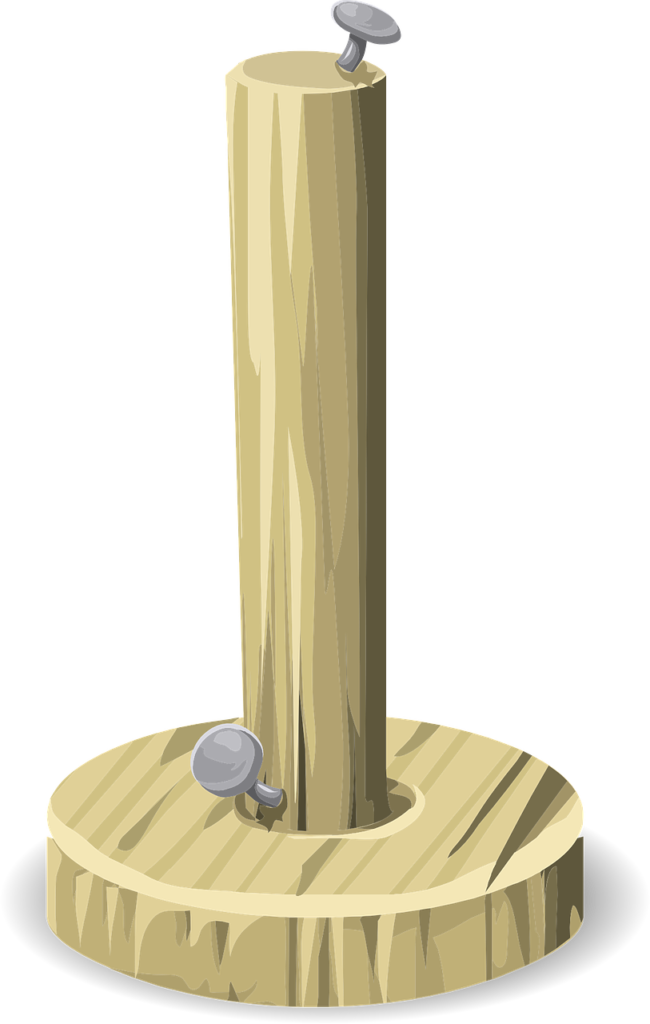So you’ve got all your electronic devices cluttering up your desk, and you’re looking for a stylish way to keep them organized? Well, look no further! In this article, we’ll show you step-by-step how to make your very own wooden docking station for all your electronics. Say goodbye to tangled cords and hello to a clean and functional workspace. Plus, it’s a great DIY project that adds a touch of rustic charm to any room. But before we get into the nitty-gritty of woodworking, have you ever wondered how to make a wooden surfboard? It’s a fascinating craft that requires a combination of skill and creativity. Let’s jump right in!

Gathering Materials and Tools
Research and plan
To begin the process of making a wooden docking station for your electronics, it is important to conduct some research and plan out your project. Consider the specific needs and requirements you have for your docking station, such as how many devices you want to charge and what additional features you would like to incorporate. Look up various designs and styles to gather ideas and inspiration for your own creation.
Determine the size and design
Once you have conducted your research, it’s time to determine the size and design of your docking station. Consider the available space you have for the station and the number of devices you want to accommodate. A compact design may be suitable for a small desk or nightstand, while a larger design could house multiple devices and additional features. Sketch out a rough design to visualize how the docking station will look.
Select the appropriate wood
Choosing the right type of wood is crucial for ensuring the durability and aesthetic appeal of your docking station. Consider sturdy and reliable options such as oak, walnut, or birch. Each type of wood has its own unique characteristics, so select one that matches your personal preferences and the overall style you have in mind. Take into account factors such as grain pattern, color, and overall quality.
Gather necessary tools
Before diving into the construction process, gather all the necessary tools and equipment you will need. Some basic tools you may require include a saw, sandpaper, measuring tape, drill, screws, and a finish or stain for the wood. Make sure you have everything on hand before beginning to avoid any unnecessary delays or interruptions.
Preparing the Wood
Measure and mark the wood
With your selected wood in hand, it’s time to measure and mark the pieces according to your design. Use a measuring tape to ensure accurate dimensions and mark the wood accordingly. Double-check your measurements to avoid any mistakes that could impact the overall construction of the docking station.
Cut the wood into required pieces
Once the wood is marked, carefully cut it into the required pieces. Use a saw suitable for woodworking to achieve clean and precise cuts. Take your time and follow the marked lines accurately to ensure that all the pieces fit together properly during assembly.
Smooth the edges and surfaces
After cutting the wood, it is important to smooth out any rough edges or surfaces. This can be done using sandpaper of various grits. Start with a coarser grit to remove any large imperfections and gradually move to finer grits for a smoother finish. Sanding the wood will provide a professional and polished look to your docking station.
Constructing the Docking Station
Assemble the base
Begin constructing your docking station by assembling the base. Use the appropriately sized pieces of wood and secure them together using screws or wood glue. Ensure that the base is stable and sturdy, as it will provide the foundation for the entire docking station.
Build the back support
Next, build the back support of the docking station. This may involve attaching vertical pieces of wood to the base or creating a slanted backrest for added stability. The back support should be designed to hold the weight of the devices and provide proper support.
Attach the dividers
To create slots or compartments for your devices, attach dividers to the base and back support. Measure and mark the placement of the dividers, ensuring they are evenly spaced and aligned. Secure them in place using screws or wood glue, ensuring they are firmly anchored to the base and back support.
Create slots or compartments
Once the dividers are in place, create slots or compartments within them to hold your devices securely. Measure and mark the dimensions of each slot, taking into consideration the size of your devices. You can use a saw or router to carefully cut out the spaces, ensuring they are precise and well-fitted.
Add finishing touches
With the basic structure of the docking station complete, it’s time to add some finishing touches. Sand any rough edges or surfaces that may have been created during the construction process. Pay attention to details such as corners and joints to ensure a smooth and professional finish. You may also choose to add decorative elements or personal touches to enhance the overall aesthetic.
Sanding and Finishing
Sanding the wooden surfaces
Before applying any finish or stain, it is important to thoroughly sand the wooden surfaces. Start with a coarser grit sandpaper and gradually work your way to finer grits. This will help to smoothen the wood, remove any imperfections, and prepare it for the finishing process. Be sure to sand both the interior and exterior surfaces of the docking station.
Applying a finish or stain
Once the wood is properly sanded, you can choose to apply a finish or stain to enhance its appearance and protect it from wear and tear. There are various types of finishes available, such as oil-based, water-based, or polyurethane. Consider the desired look and level of protection you want for your docking station before selecting a suitable finish. Apply multiple coats as needed, following the manufacturer’s instructions.
Sealing the wood for protection
To ensure the longevity of your wooden docking station, it is important to seal the wood for added protection against moisture, heat, and other environmental factors. This can be done by applying a sealer or topcoat over the finish or stain. The sealer will create a barrier that prevents damage and extends the lifespan of your docking station.

Installing Charging Stations
Research and select charging station options
To efficiently charge your electronic devices, research and select the appropriate charging station options. Consider factors such as compatibility with your devices, charging speed, and additional features such as USB ports or wireless charging capabilities. Look for reliable and reputable brands that offer the functionality you require.
Determine the number and type of charging ports
Based on the devices you have and their charging requirements, determine the number and type of charging ports you will need in your docking station. This will vary depending on the size of your docking station and the number of devices it can accommodate. Ensure that the charging ports are strategically positioned to allow easy access and convenient charging.
Position the charging stations
With the charging stations selected and the number of ports determined, position them within the slots or compartments of your docking station. Secure them in place using screws, adhesive, or any mounting hardware provided with the charging stations. Ensure that the positioning allows for proper cable management and easy insertion and removal of devices.
Route and conceal cables
To maintain a clean and organized appearance, it is important to route and conceal the cables of your charging stations. Use cable management solutions such as clips, zip ties, or cable sleeves to bundle and keep the cables neatly organized. This will prevent tangling and make it easier to connect and disconnect your electronic devices.
Adding Personalized Features
Incorporate a device holder or stand
Consider incorporating a device holder or stand within your docking station to provide additional support and convenience. This can be a designated area to prop up your smartphone or tablet while it charges, keeping it easily accessible and visible.
Include a cable management system
To further enhance the functionality and aesthetics of your docking station, include a cable management system. This can involve incorporating cable channels or hidden compartments to neatly store and conceal cables, reducing clutter and tangling.
Integrate speakers or sound amplifiers
If you enjoy listening to music or audio from your electronic devices while they charge, consider integrating speakers or sound amplifiers into your docking station. This will allow you to enjoy enhanced audio quality without the need for separate speakers.
Incorporate a wireless charging pad
For added convenience and versatility, you can incorporate a wireless charging pad into your docking station. This will enable you to charge compatible devices without the need for cables, providing a seamless and clutter-free charging experience.
Add a personalized engraving or design
To make your wooden docking station truly unique and personalized, consider adding an engraving or design. This can be your initials, a meaningful symbol, or any other design that holds significance to you. This will add a touch of individuality and make your docking station stand out.

Testing and Adjusting
Ensure stability and sturdiness
Before finalizing the construction process, it is crucial to ensure the stability and sturdiness of your wooden docking station. Test the overall structure by gently shaking or applying pressure to various areas. If any areas feel weak or unstable, make necessary adjustments or reinforce those sections. A stable and sturdy docking station will provide a secure and reliable charging solution for your electronics.
Check cable connections and functionality
Once the construction is complete, check all cable connections to ensure they are secure and properly plugged in. Test the functionality of the charging stations by connecting your devices and monitoring the charging process. Ensure that all ports are working correctly and providing the intended charging capabilities.
Make any necessary adjustments
During the testing phase, if you encounter any issues or identify areas for improvement, make the necessary adjustments. This could involve tightening screws, improving cable management, or addressing any other concerns that may impact the functionality or appearance of your docking station. Be proactive in resolving any issues to ensure a smooth and optimal user experience.
Maintenance and Care
Regular cleaning and dusting
To maintain the quality and appearance of your wooden docking station, make it a habit to regularly clean and dust it. Use a soft cloth or microfiber cloth to gently wipe away any dust or debris. Avoid using harsh chemicals or abrasive cleaners that could damage the finish or stain.
Avoiding excessive moisture or heat
Wood is sensitive to excessive moisture and heat, so it is important to avoid exposing your docking station to these elements. Keep it away from sources of direct sunlight, excessive humidity, or areas prone to water spills. This will help prevent warping, cracking, or other forms of damage to the wood.
Inspecting and repairing any damages
Periodically inspect your wooden docking station for any damages or signs of wear and tear. If you notice any cracks, scratches, or other issues, take the necessary steps to repair them. This may involve sanding, refinishing, or replacing damaged components. Regular maintenance and timely repairs will help prolong the lifespan of your docking station.

Customization Ideas
Paint or stain the docking station
If you prefer a more colorful and vibrant look, consider painting or staining your wooden docking station. Choose a paint or stain color that complements your personal style or the decor of your room. This will add a unique and personalized touch to your docking station.
Inlay patterns or designs
To further customize your wooden docking station, you can incorporate inlay patterns or designs. This involves creating patterns or designs on the wood surface using different types of wood, metal, or even colored resin. The possibilities are endless, allowing you to create a truly one-of-a-kind piece.
Attach hooks or hangers
For added functionality, attach hooks or hangers to your docking station. These can be used to hang headphones, charging cables, or other accessories. This will help keep your workspace organized and prevent cords from tangling.
Include a photo frame or memo board
To personalize your docking station even more, consider including a photo frame or memo board. This will allow you to display cherished memories or important notes, turning your docking station into a sentimental and functional piece.
Incorporate a clock or LED lights
To add some extra flair and functionality, incorporate a clock or LED lights into your docking station. This will not only provide a useful feature but also create an attractive and eye-catching design element.
Conclusion
Summary of the process
Making a wooden docking station for your electronics is a rewarding and practical project. By gathering the necessary materials and tools, preparing the wood, constructing the docking station, sanding and finishing, installing charging stations, adding personalized features, testing and adjusting, and performing regular maintenance and care, you can create a customized and functional docking station that perfectly suits your needs.
Final thoughts and recommendations
Remember to take your time during each step of the process and pay attention to detail. Consider the size and design of your docking station, the type of wood and finish you prefer, and any additional features you would like to include. Personalize your docking station to reflect your unique style and make it a focal point of your workspace or home. With proper care and maintenance, your wooden docking station will provide a practical and stylish charging solution for your electronic devices for years to come. Enjoy the process and have fun creating your very own wooden docking station!


